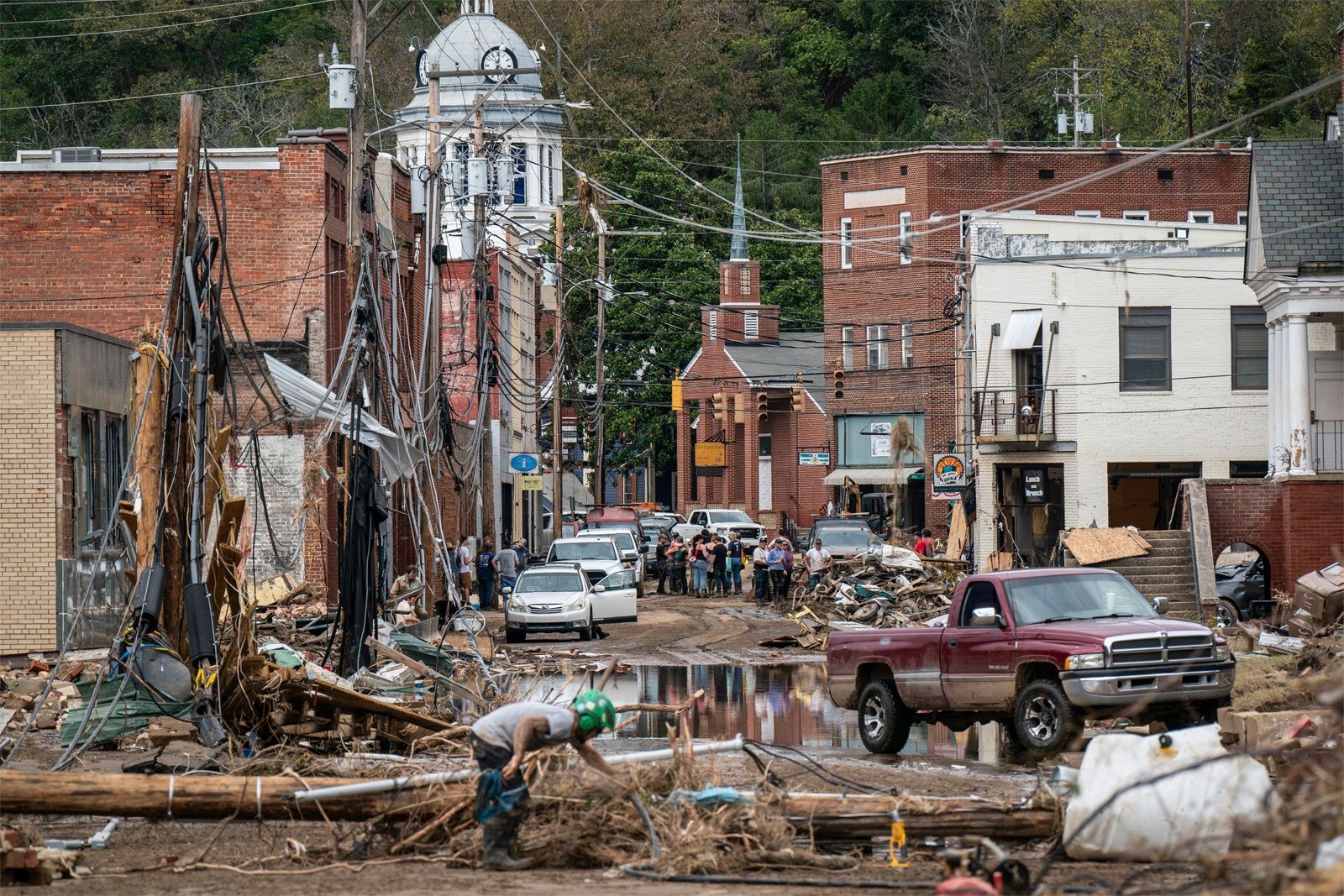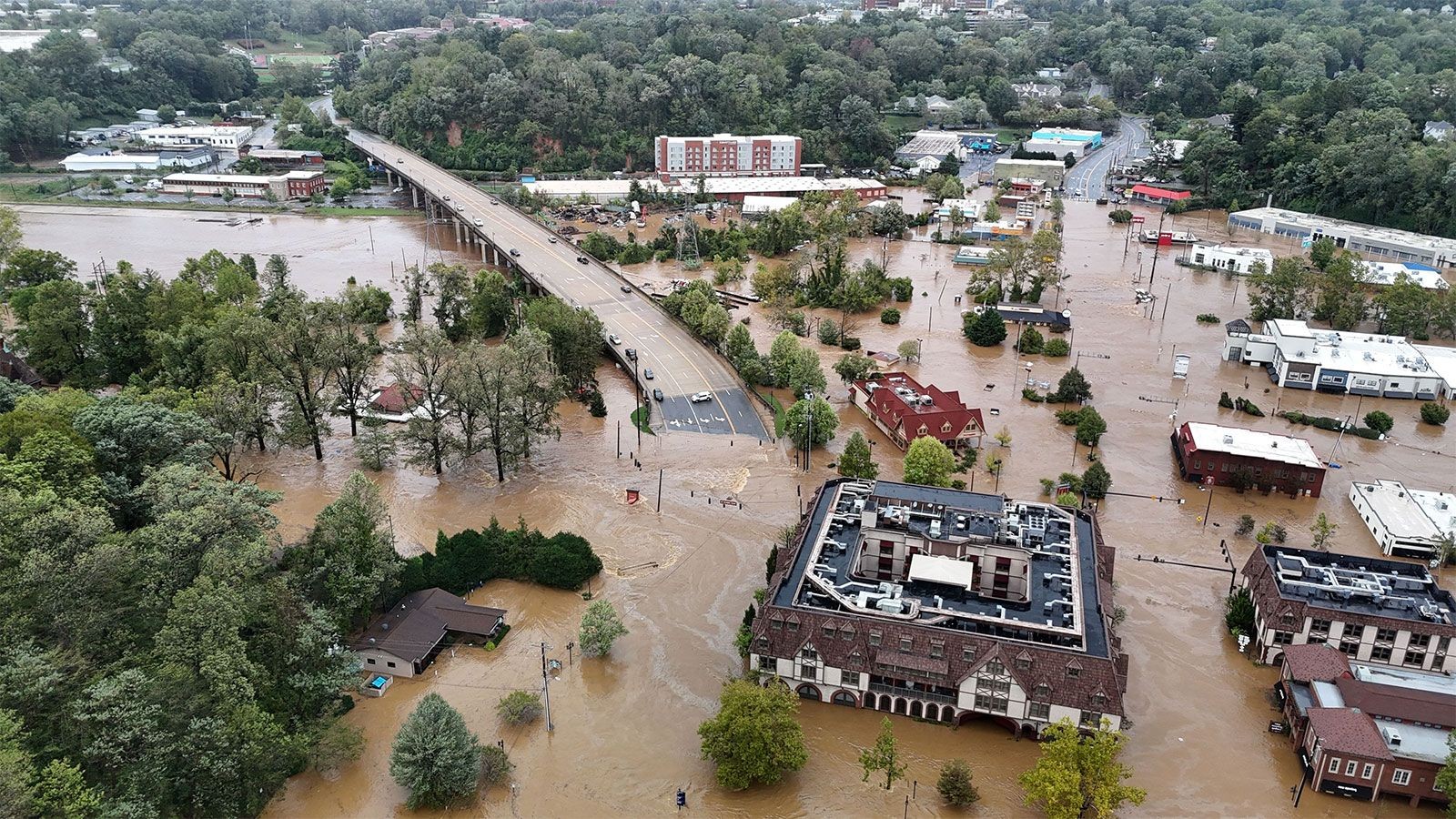Do you need to know the path of Hurricane Helene? Hurricane Helene’s path was devastating, making landfall in Florida on September 26, 2024, and causing widespread damage and loss of life across several states. At WHAT.EDU.VN, we provide quick and free answers to your questions about such significant events, offering a reliable source of information when you need it most. The aftermath of Hurricane Helene is a testament to the power of nature and the importance of understanding tropical cyclones, storm surges, and climate change.
1. What Was Hurricane Helene?
Hurricane Helene was a catastrophic tropical cyclone in 2024, known for its rapid intensification and the extensive damage and loss of life it caused across the southeastern United States. It made landfall in northwestern Florida on September 26, 2024, and impacted areas as far as Tennessee, Georgia, North Carolina, and South Carolina.
1.1 Key Facts About Hurricane Helene:
- Date: September 24, 2024 – September 28, 2024
- Location: Florida, Georgia, North Carolina, United States, Virginia
- Impact: High winds and flooding resulted in over 230 deaths.
- Economic Impact: Estimated up to $200 billion in property and infrastructure damage.
1.2 Why Was Hurricane Helene So Destructive?
The rapid intensification of Hurricane Helene was fueled by abnormally warm waters in the Caribbean Sea and Gulf of Mexico, a phenomenon that meteorologists link to global warming.
2. How Did Hurricane Helene Form and Develop?
Hurricane Helene began as a system of scattered thunderstorms in the western Caribbean Sea on September 23, 2024. By the next day, it had organized into a tropical storm and was classified as Tropical Storm Helene by NOAA’s National Hurricane Center.
2.1 Initial Development:
- September 23, 2024: Scattered thunderstorms in the western Caribbean Sea.
- September 24, 2024: Classified as Tropical Storm Helene.
2.2 Rapid Intensification:
Over the next 36 hours, Helene rapidly gained strength due to the unusually warm surface waters of the Gulf of Mexico, which were nearly 1.8 °F (1 °C) warmer than the 2003–14 mean.
2.3 Progression to Hurricane Status:
- Category 1 Hurricane: Strengthened to this level 24 hours after being named a tropical storm.
- Category 2 Hurricane: Reclassified on September 26.
- Category 3 Hurricane: By 2:25 pm on September 26.
- Category 4 Hurricane: By 6:20 pm on September 26, with winds reaching 130 miles (215 km) per hour.
This satellite image captured Hurricane Helene just before it made landfall in northwestern Florida on September 26, 2024. Understanding the conditions that lead to such rapid intensification is crucial for predicting and preparing for future storms.
3. What Was the Path of Hurricane Helene After Landfall?
Hurricane Helene made landfall on Florida’s Big Bend region on September 26, 2024, and then moved inland, affecting several states.
3.1 Landfall in Florida:
- Location: Florida’s Big Bend region, southeast of Tallahassee.
- Time: 11:10 pm EDT on September 26.
- Intensity: Category 4 hurricane with winds of 140 miles (225 km) per hour.
- Storm Surge: 15-foot (4.5-meter) surge in beachfront communities like Keaton Beach and Steinhatchee.
3.2 Inland Movement:
- September 27: Moved inland and was downgraded to a tropical storm by 5:00 am EDT.
- Path: Cut across western North Carolina and eastern Tennessee after turning northwest.
3.3 Impact on Other States:
Even as a tropical storm, Helene brought heavy rain and flooding to Georgia, North Carolina, South Carolina, Tennessee, and Virginia.
4. What Were the Impacts of Hurricane Helene?
Hurricane Helene left a devastating trail of destruction, including fatalities, infrastructure damage, and widespread flooding.
4.1 Fatalities:
- Total: Over 230 people.
- States Affected: Florida, Georgia, North Carolina, South Carolina, Virginia, and Tennessee.
- Highest Number of Deaths: North Carolina.
4.2 Infrastructure Damage:
- Storm Surge: Damaged or destroyed hundreds of structures along the Florida coast.
- Roads and Bridges: Washed out in Georgia.
- Power Outages: Left approximately 4 million people without electricity.
4.3 Flooding:
Record rainfall caused rivers to overflow, leading to flash flooding, road washouts, and landslides in several states.
The aftermath of Hurricane Helene’s impact on Marshall, North Carolina. Cleanup efforts highlight the extensive flooding and debris left behind.
4.4 Economic Impact:
The storm’s economic impact, including property and infrastructure damage, could reach as high as $200 billion, making it one of the costliest storms in U.S. history.
5. What Rescue and Relief Efforts Were Undertaken After Hurricane Helene?
In the wake of Hurricane Helene, numerous rescue and relief efforts were launched to assist those affected by the storm.
5.1 Government Response:
- National Guard: Assisted with evacuations, search-and-rescue, food delivery, and logistics.
- FEMA: Provided emergency financial relief to disaster victims.
5.2 Community Response:
- American Red Cross: Provided assistance to affected communities.
- Local Volunteers: Organized clean-up and support efforts.
5.3 Challenges:
The spread of misinformation and disinformation on social media complicated relief efforts, undermining the legitimacy of aid organizations and raising false alarms.
Members of Atlanta’s Fire Rescue Department’s Swift Water Rescue Team rescuing a resident in Atlanta, Georgia, highlighting the critical role of emergency responders in the aftermath of Hurricane Helene.
5.4 Evacuations:
Thousands of people were trapped in their homes, requiring rescue teams to use boats, high-water vehicles, and helicopters to evacuate them.
6. What Was the Aftermath and Long-Term Impact of Hurricane Helene?
The aftermath of Hurricane Helene involved not only immediate recovery efforts but also long-term considerations regarding climate change and future preparedness.
6.1 Climate Change Implications:
Climate scientists noted that the rapid intensification and overall severity of Hurricane Helene provided further evidence of the effect of climate change on hurricane strength.
6.2 Increased Ocean Temperatures:
The Gulf of Mexico has warmed approximately 0.34 °F (0.19 °C) per decade since 1970, more than twice the rate of the oceans at large.
6.3 Long-Term Recovery:
Several states implemented recovery plans, with repair crews working to restore electrical power and clear damaged roads.
6.4 Community Rebuilding:
Communities like Chimney Rock, North Carolina, faced the daunting task of rebuilding after being devastated by floodwaters.
Streets and buildings in Asheville, North Carolina, submerged in muddy water due to flooding caused by Hurricane Helene. This photo illustrates the scale of the disaster and the challenges faced by affected communities.
7. How Does Climate Change Influence Hurricanes?
Climate change has a significant impact on hurricanes, affecting their intensity, frequency, and overall behavior.
7.1 Warmer Ocean Temperatures:
Warmer ocean temperatures provide more energy for hurricanes, allowing them to intensify rapidly. Studies show the Gulf of Mexico has warmed significantly, contributing to storms like Helene growing exceptionally fast.
7.2 Increased Moisture:
Warmer air holds more moisture, leading to heavier rainfall during hurricanes. Helene released approximately 40 trillion gallons (151 trillion liters) of rain over the southeastern U.S.
7.3 Sea Level Rise:
Rising sea levels increase the risk of storm surge, causing more extensive flooding in coastal areas.
7.4 Changes in Hurricane Tracks:
Climate change may also influence the tracks of hurricanes, making it more difficult to predict where they will make landfall.
8. How Can Communities Prepare for Future Hurricanes?
Preparing for future hurricanes involves a combination of individual, community, and governmental efforts to mitigate risks and enhance resilience.
8.1 Individual Preparedness:
- Emergency Kits: Assemble emergency kits with essential supplies like food, water, medication, and first-aid supplies.
- Evacuation Plans: Develop evacuation plans and know evacuation routes.
- Home Protection: Reinforce homes with storm shutters, secure outdoor objects, and elevate appliances.
- Insurance: Ensure adequate insurance coverage for property and flood damage.
8.2 Community Preparedness:
- Early Warning Systems: Establish and maintain effective early warning systems.
- Evacuation Shelters: Designate and equip public evacuation shelters.
- Community Education: Provide education and outreach programs to inform residents about hurricane preparedness.
- Infrastructure Improvements: Invest in infrastructure improvements to reduce flood risks and enhance resilience.
8.3 Governmental Preparedness:
- Building Codes: Enforce strict building codes that account for hurricane risks.
- Land Use Planning: Implement responsible land use planning to minimize development in high-risk areas.
- Emergency Response Plans: Develop and regularly update emergency response plans.
- Funding for Research: Allocate funding for research to improve hurricane forecasting and preparedness.
9. What Role Does Technology Play in Hurricane Preparedness and Response?
Technology plays a crucial role in hurricane preparedness and response, enhancing forecasting accuracy, communication, and coordination.
9.1 Satellite Technology:
Satellites provide critical data for tracking and monitoring hurricanes, including information on wind speed, rainfall, and storm intensity.
9.2 Computer Modeling:
Advanced computer models help predict hurricane tracks and intensity, providing valuable information for evacuation planning.
9.3 Communication Systems:
Reliable communication systems, including satellite phones and two-way radios, ensure effective communication between emergency responders and affected communities.
9.4 Social Media:
Social media platforms facilitate the rapid dissemination of information, allowing authorities to issue warnings and provide updates to the public. However, it’s important to verify information to avoid spreading misinformation.
9.5 GIS Mapping:
Geographic Information System (GIS) mapping helps visualize storm impacts, assess damage, and coordinate rescue efforts.
10. Frequently Asked Questions (FAQs) About Hurricane Helene:
| Question | Answer |
|---|---|
| What made Hurricane Helene so strong? | The unusually warm waters in the Gulf of Mexico and Caribbean Sea provided ample energy for the storm to intensify rapidly. |
| How many people died because of Hurricane Helene? | More than 230 people lost their lives due to the hurricane, with the highest number of deaths occurring in North Carolina. |
| What states were most affected by Hurricane Helene? | Florida, Georgia, North Carolina, South Carolina, Tennessee, and Virginia all experienced significant impacts from the storm. |
| How did climate change contribute to Hurricane Helene’s severity? | Climate change has led to warmer ocean temperatures and increased moisture in the atmosphere, both of which contributed to the storm’s rapid intensification and heavy rainfall. |
| What were the main challenges in the rescue and relief efforts? | Misinformation on social media, widespread flooding, and damaged infrastructure posed significant challenges to rescue and relief efforts. |
| How can individuals prepare for future hurricanes? | Assembling emergency kits, developing evacuation plans, reinforcing homes, and ensuring adequate insurance coverage are crucial steps for individual preparedness. |
| What role does technology play in hurricane preparedness? | Satellite technology, computer modeling, communication systems, and GIS mapping enhance forecasting accuracy, communication, and coordination during hurricane events. |
| How can communities become more resilient to hurricanes? | Implementing responsible land use planning, enforcing strict building codes, and investing in infrastructure improvements can enhance community resilience. |
| What is storm surge and why is it dangerous? | Storm surge is the abnormal rise in sea level during a hurricane, caused primarily by the storm’s winds pushing water ashore. It can inundate coastal areas, causing widespread flooding and damage. |
| What can be done to mitigate the impacts of climate change on hurricanes? | Reducing greenhouse gas emissions through transitioning to renewable energy sources, improving energy efficiency, and adopting sustainable practices are essential steps to mitigate the impacts of climate change on hurricanes. |


Do you have more questions about hurricanes or other natural disasters? At WHAT.EDU.VN, we’re here to provide fast, free, and reliable answers to all your questions. Contact us today at 888 Question City Plaza, Seattle, WA 98101, United States, or reach out via WhatsApp at +1 (206) 555-7890. Visit our website at what.edu.vn for more information. Let us help you stay informed and prepared!